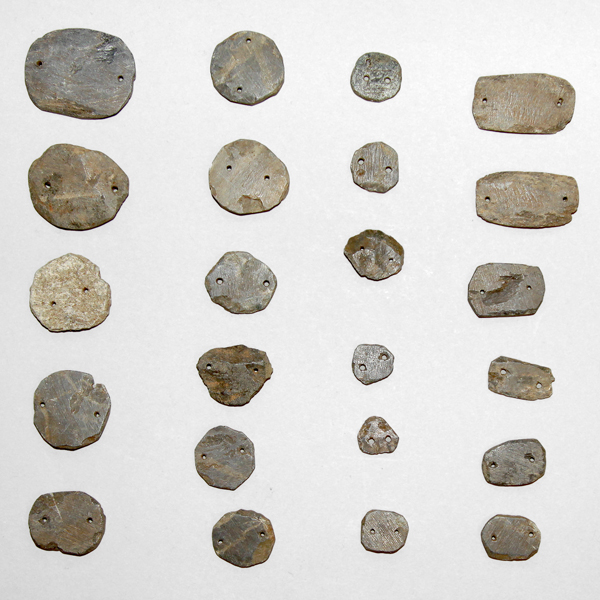古坟时代的祭祀
-

滑石双孔圆板
茨城县坂东市 猪子遗址出土 古坟时代 5-6世纪
木村喜市捐赠平成馆 日本考古文物展室
2024年6月25日(星期二) ~ 2024年12月22日(星期日)古坟时代的祭祀,通常举行在远离交通要道和日常生活场所的丘陵、小岛等被认为有神灵寄宿的地方。祭祀道具的材质有土、石、铁等,种类多样。在东日本地区普遍使用了滑石材质的镜子、剑、珠等道具。
| 指定 | 名称 | 数量 | 作者、出土、传入 | 时代、年代世纪 | 收藏者、捐赠者、展品编号 | 备注 | |
| 推荐 | 土制勾玉 | 茨城县坂东市 猪子遗址出土 | 古坟时代 5-6世纪 | 木村喜市捐赠 J-7265 | |||
| 推荐 | 滑石勾玉 | 茨城县坂东市 猪子遗址出土 | 古坟时代 5-6世纪 | 木村喜市捐赠 J-7266-1 | |||
| 推荐 | 剑尖状石器 | 茨城县坂东市 猪子遗址出土 | 古坟时代 5-6世纪 | 木村喜市捐赠 J-7266-2 | |||
| 推荐 | 滑石双孔圆板 | 茨城县坂东市 猪子遗址出土 | 古坟时代 5-6世纪 | 木村喜市捐赠 J-7269 | |||
| 推荐 | 手捏土器 | 茨城县坂东市 猪子遗址出土 | 古坟时代 5-6世纪 | 木村喜市捐赠 J-7264 |
